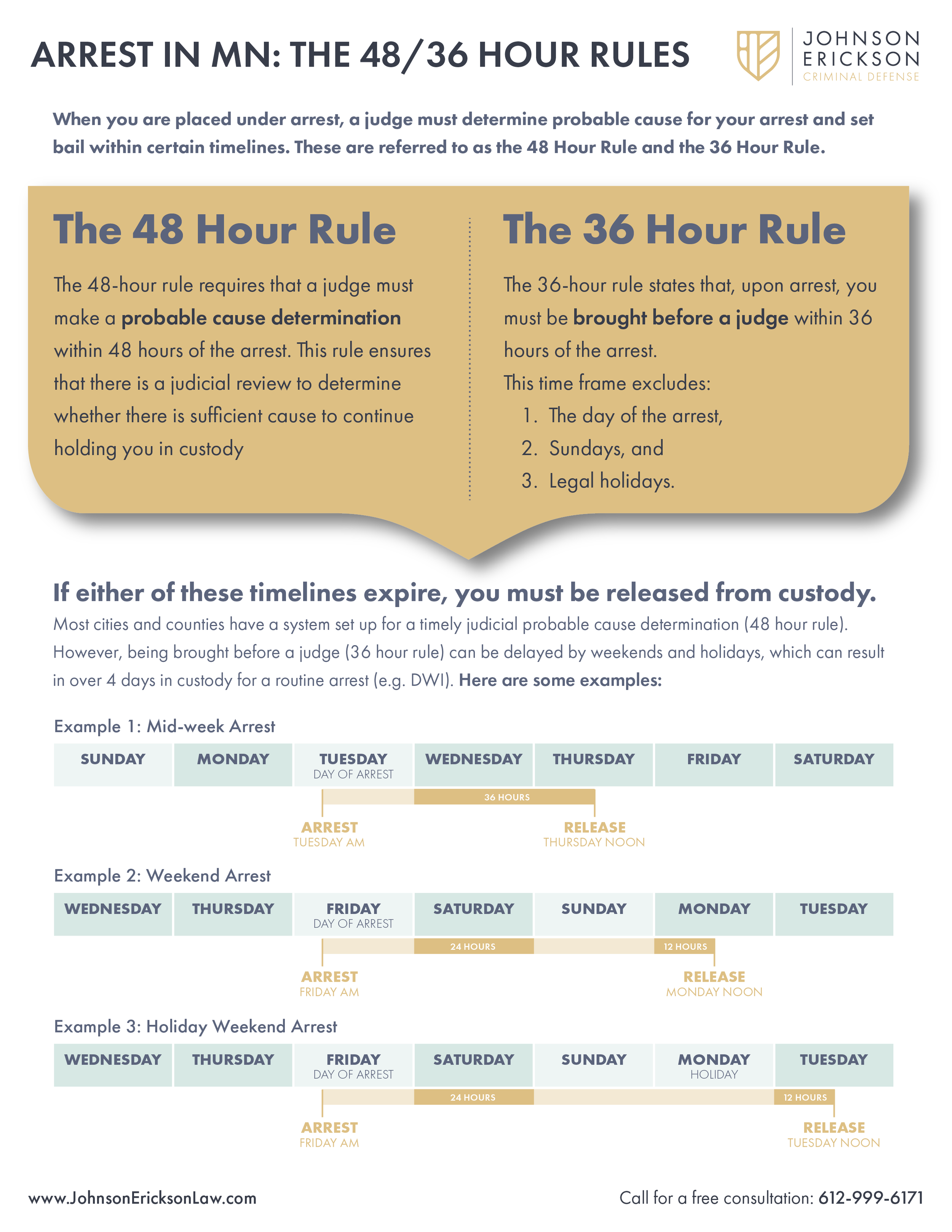Arrested in Minnesota - How long can they hold you? - The 48 and 36 Hour Rules
In Minnesota, the 36-hour rule and the 48-hour rule are guidelines that determine how long a person can be held in custody on suspicion of criminal charges before they must appear before a judge. If you or a loved one has been arrested, contact Johnson Erickson Law for trusted guidance and to help reduce time in custody.
The 48-Hour and 36 -Hour Rules Explained:
48-Hour Rule
The 48-hour rule requires that a judge must make a probable cause determination within 48 hours of the arrest. Unlike the 36-hour rule, this time frame includes the day of the arrest, Sundays, and legal holidays. This rule ensures that there is a judicial review to determine whether there is sufficient cause to continue holding an arrested person in custody.
Most counties have a system set up to conduct a timely judicial probable cause determination, so this rule does not usually keep you in custody.
36-Hour Rule
The 36-hour rule states that a person who is arrested must be brought before a judge without unnecessary delay and within 36 hours of the arrest. This time frame excludes the day of the arrest, Sundays, and legal holidays. If the person is not brought before a judge within this period, they must be released.
Because of the excluded days (day of arrest, Sundays, and holidays), there can be circumstances where you sit in jail for over four full days on a routine arrest. This can feel particularly unfair when you are ultimately entitled to a maximum bail (e.g. $12,000 for a gross misdemeanor DWI). Unfortunately, you are not entitled to that bail until you are charged, so the time between arrest and charge is a period in which you are at the whim of the prosecutor and judge to agree to bail and release (which they often won’t).
If you or a loved one has been arrested, contact Johnson Erickson Law for trusted guidance and to help reduce time in custody.


